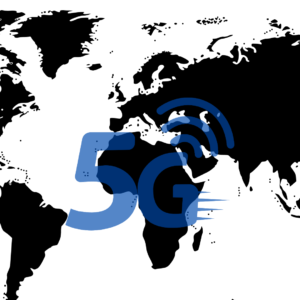The Future of 5G and 6G
5G, the future of internet technologies, will develop thanks to satellites. The future of 6G literally depends on satellite technologies.
The better things are in the air, the more productive our business will be on the ground.
The advancement of technology and the increasing demand for ubiquitous broadband internet services have once again demonstrated the importance of the option of providing internet from space to the consumer everywhere.
We still need to experiment with how 5G internet service standards are adapted for satellite connections, realize the near-orbit satellite services that have been successfully implemented and are now available for use, and work in this direction.
The most exciting technology of the Internet of Things fifth-generation mobile communications (5G) supporting massive machine-type communications is all objects and vehicles. With 5G, it will be possible for all machines such as aircraft, drones, all construction machines and war equipment to receive remote commands and move quickly and without errors.
Although this technology plans to serve machines located all over the world, mobile networks will be insufficient and costly due to geographical structures. Therefore, the great innovation and vital role of the use of barrier-free satellite technologies has been accepted all over the world.
Still, many countries and companies prefer to just monitor rather than invest in this technology. To understand the important advantages of unlimited and unconditional use of 5G, you can consider the ability to download a 2-minute file in 1 second.
60% of all communication technologies are accessed via satellites. The same method will be used for broadband internet. This time, closer satellites will be activated and the end consumer will use the internet without any borders.
Satellite networks will support a range of applications including greater Internet of Things (IoT) deployments, and easier access will enable faster transaction throughput.
Internet service is still not provided to approximately 2 billion people in the world. The main reason for this is geographical reasons. By 2026, 40% of the world’s population will have 5G service. There are huge differences here. The use of satellite technologies in broadband internet will bring equal ease of access.
For both the unserved and underserved, close-orbit small satellite networks in space will deliver true broadband services to everyone everywhere, not just in the form of traditional satellite internet services.
6G will transform cellular technology into base stations that can serve even the most remote places with near, medium and far orbit satellites and high altitude platforms. A base station on a location serves the area that the eye can see, but satellites are eyes that look from far away and they provide uninterrupted and unlimited service.
Closer orbit satellites with larger capacity will be the savior for 6G. The most obvious example of this service, which will be a bit expensive in its early stages, is that it allows you to transfer a 45-minute movie or work file in a minute or two.
Ships in the middle of the ocean, planes in the air and even launched spacecraft will have very easy access. 6G satellite technologies will rewrite the next generation service network and its quality
.




